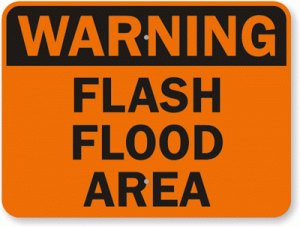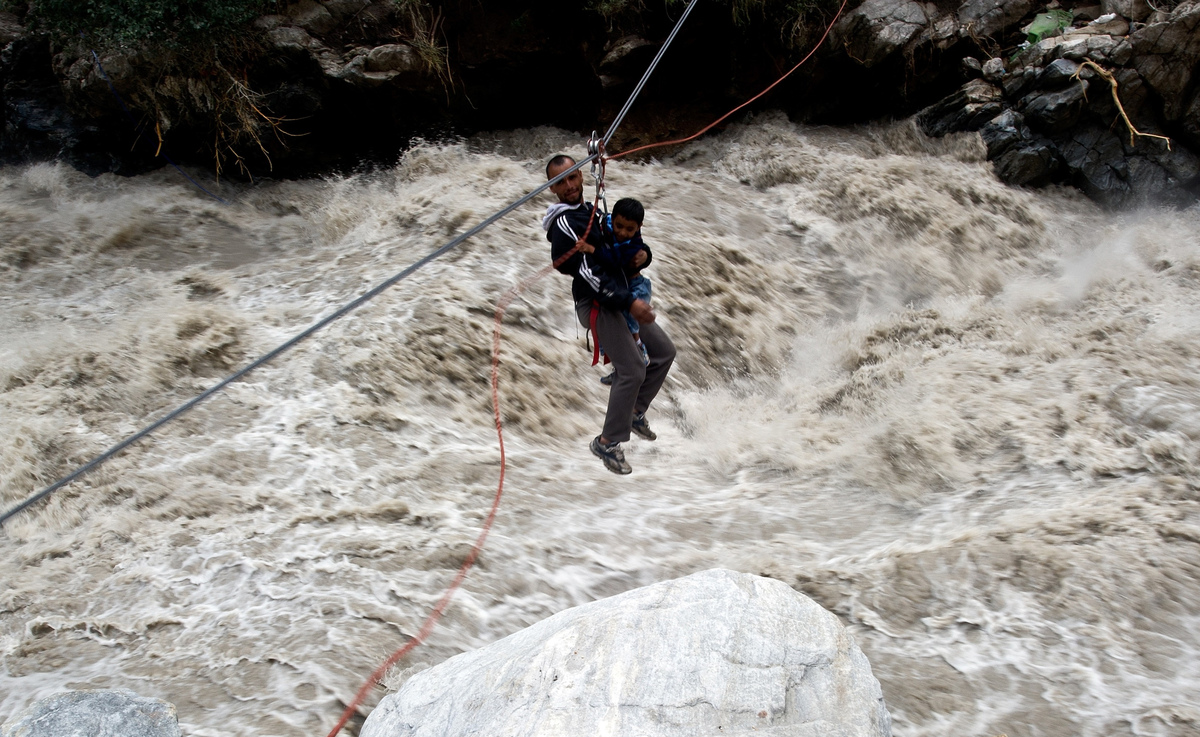Uttarakhand flash floods: fear of epidemic emerges as rescue operations continue
After the massive devastation caused by flash floods in Uttarakhand, India on June 15, it might take years before life crawls back to normalcy. As clean-up procedures start, the fear of an epidemic looms large. However, experts are working to dispel fears, and stress that rescue and rehabilitation should be the first priority.

Sign available at SmartSign.
Dubbed the “Himalayan tsunami”, the tragedy began when incessant rains led to the flooding of river Mandakini, unleashing torrents of water into the the hilly region. Mud and boulders came crashing down, sweeping away everything in their path, including buildings, roads, bridges, and people.
The areas affected in the flash floods housed some of the country’s most important pilgrimage destinations. Religious tourism, the mainstay of much of the state’s economy, was at its peak when the calamity occurred.
Evacuation and rescue
Bad weather delayed evacuation and rescue efforts by three days. On June 18, as the enormity of the crisis unfurled, the armed forces went on a war footing. Rescuers attempted to follow a strict order of evacuation: the ailing first, followed by the elderly, mothers and children, then the rest.

Stranded pilgrims are transported using a rope by the Indo-Tibetan Border Police (ITBP). Image by The Huffington Post.
Thus far, the National Disaster Response Force has rescued 108,253 people by airlifting them from the area and paving the way through makeshift bridges and roads. Evacuation continues even 20 days after the tragedy first struck the region.
The government has set-up emergency shelters at Dehradun where people evacuated from the catastrophe are given immediate medical help. Multiple agencies from India and abroad have also set up shelters and are providing help in terms of food and supplies.
Fear of epidemic due to rotting corpses
The fear of an epidemic outbreak has set in among the population as the government orders the mass cremation of unidentified bodies in Kedarnath, the worst hit area in Uttarakhand flash floods.
The notion that rotting corpses could trigger an epidemic has worried all, including rescue personnel and survivors. Misinformed media fueled these fears by validating the danger, but according to the International Committee of the Red Cross, contrary to popular belief, dead bodies are a negligible health hazard. In a disaster, people die as a result of injury, drowning or fire and are not likely to have epidemic-causing diseases.
People handling bodies do run a slight risk of contracting tuberculosis, hepatitis B and C, HIV and diarrheal diseases. However, these agents do not last more than two days in a dead body (except for HIV, which may survive up to six days). Workers can reduce the risks by wearing rubber boots and gloves and by practicing basic hygiene.
Dead bodies can, however, contaminate water streams, which would give rise to diarrheal infections. Senior disaster management official K L Pandey says, “We have reports that many stranded people are suffering from diarrhea and other ailments and have decided to cremate the corpses near the Kedarnath shrine.” However, no cases of food-borne, water-borne, air-borne, or direct-contact diseases have been reported from the affected areas.
Three central public health teams with district units of integrated Disease Surveillance program have been placed in the flood affected areas to conduct health surveillance and take appropriate measures to prevent the outbreak of disease.
According to Uttarakhand chief secretary Subash Kumar, the latest, official death toll stands at 580. However, estimates of casualties vary with each passing day, with more and more dead bodies being recovered from underneath slush and debris.
State Chief Minister, Vijay Bahuguna has declared that if those counted as missing do not surface by July 15, they will be presumed dead. More than 3000 people, including 1227 children, are currently missing.




